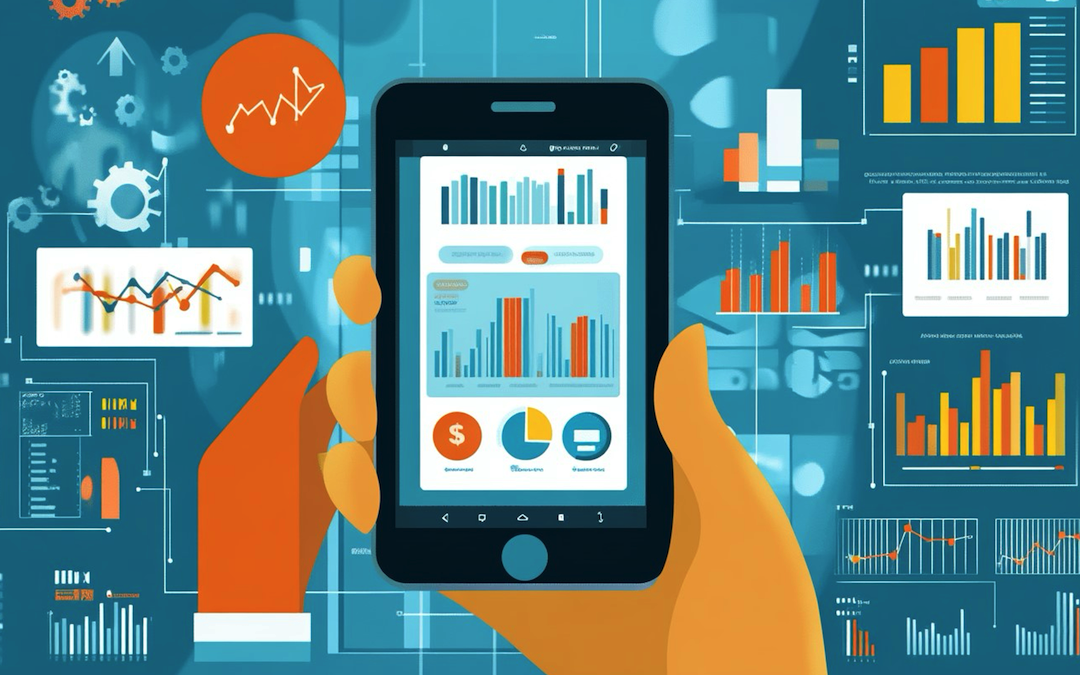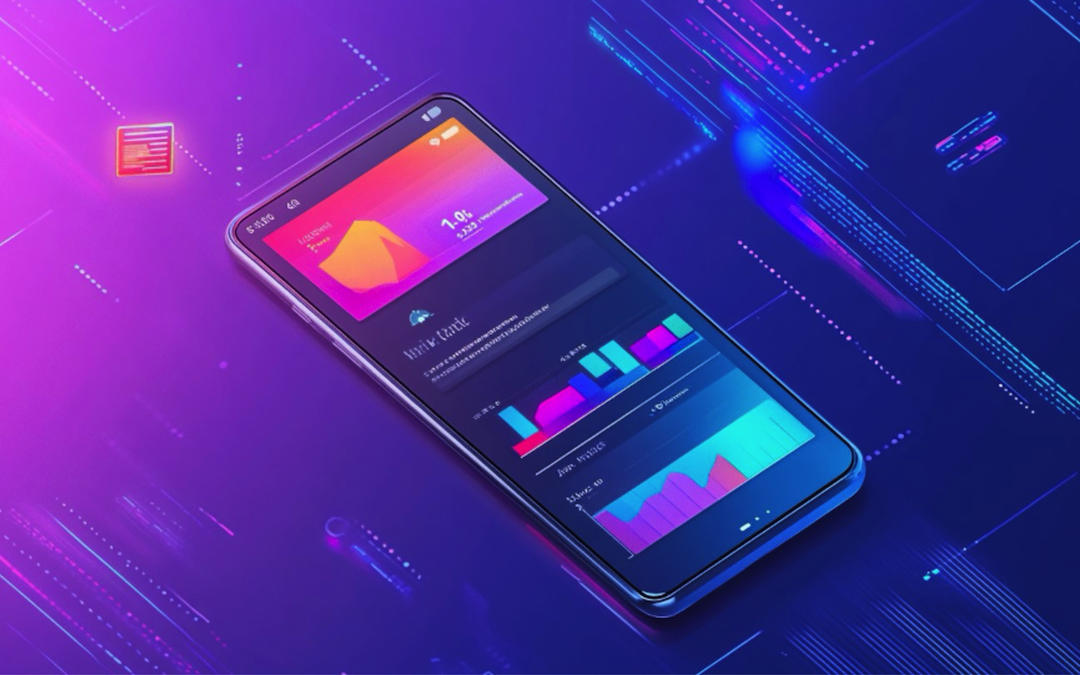
The competitive mobile app market requires precise analytics. Mobile app analytics tools are critical for monitoring user engagement, pinpointing issues, and enhancing performance. They help marketers and developers comprehend user interactions and track essential metrics. Utilizing these tools facilitates informed decisions that boost user experience and retention. This guide explains how to choose and apply the most effective mobile app analytics tools to optimize your app's success.
Understanding the importance of app analytics
App analytics tools are essential for any mobile app developer or product manager who wants to succeed in today's market. These tools provide a wealth of data that can help you understand your users and optimize your app's performance. User behavior insights are at the core of app analytics. By tracking user actions, such as screen views, button clicks, and in-app purchases, you can gain a deep understanding of how users interact with your app.
Analytics also play a crucial role in app performance and user retention. By monitoring key metrics like session duration, crash rates, and user retention, you can quickly identify and address issues that may be impacting your app's success. This proactive approach can help you reduce churn, increase engagement, and ultimately drive more revenue.
Key metrics to track with app analytics tools
When using app analytics tools, it's crucial to focus on the right metrics to gain meaningful insights into your app's performance and user behavior. Here are some essential metrics to track:
- Active users: Measure the number of unique users engaging with your app within a specific time frame.
- Session length: Monitor how long users spend in your app during a single session.
- Conversion rates: Track specific actions or events aligned with your app's goals, such as user registration or in-app purchases.
- Retention rates: Measure the percentage of users who continue using your app over time.
- Acquisition metrics: Identify the sources and channels driving new user installs and registrations.
User behavior insights
Tracking user actions provides a comprehensive understanding of app interactions. This data helps identify patterns, uncover pain points, and make informed decisions to enhance user experience. By analyzing user behavior, you can discover which features are most popular, where users spend the most time, and at what points they tend to drop off. These insights allow you to prioritize improvements and optimize the user journey within your app.
Performance and retention analysis
Using analytics to monitor app performance and user retention is crucial for long-term success. By tracking metrics like session duration, crash rates, and user retention, you can quickly identify and address issues that impact app success. For example, if you notice a sudden drop in retention rates, you can investigate potential causes such as app crashes, slow load times, or confusing user interfaces. This proactive approach allows you to maintain a high-quality user experience and keep users engaged with your app over time.
Selecting the right app analytics tools
Choosing the appropriate analytics tools is crucial for understanding user behavior and optimizing your app's performance. When evaluating analytics platforms, consider factors such as data accuracy, real-time reporting capabilities, and the ability to track key metrics like user acquisition, retention, and engagement. Look for tools that offer a comprehensive view of your app's performance across multiple dimensions.
Ease of integration is another important factor when choosing app analytics tools. Opt for platforms that provide SDKs and APIs compatible with your app's technology stack, ensuring seamless data collection and minimizing development effort. Well-documented integration guides and responsive customer support can further streamline the implementation process.
Features to look for in analytics platforms
When evaluating app analytics tools, consider the following key features:
- Comprehensive performance views
- SDK and API compatibility
- Customizable dashboards for data visualization
- Real-time reporting capabilities
- User segmentation and cohort analysis
- Funnel analysis and conversion tracking
- Crash reporting and error logging
These features will help you gain a holistic understanding of your app's performance and user behavior, enabling you to make data-driven decisions for improvement.
Considerations for long-term app growth
As your app grows, your analytics needs will evolve. Choose tools that can scale with your user base and handle increasing data volumes without compromising performance. Look for advanced features like cohort analysis, funnel optimization, and user segmentation to support more targeted app improvements as your needs evolve. Additionally, consider tools that offer integration with other marketing and customer support systems to provide a more comprehensive view of your app's performance and user journey.

Implementing effective event tracking
Event tracking is crucial for understanding user behavior in mobile apps. It involves recording specific user actions, such as button clicks or screen views. By setting up event tracking, you gain valuable insights into how users interact with your app. To implement effective event tracking, start by defining a clear event taxonomy. This taxonomy should include all the important actions users can take within your app. Be sure to use consistent naming conventions for events across all platforms and devices.
When setting up event tracking, consider using a mobile analytics tool that provides SDKs to simplify the process of tracking events in your app. These tools often offer powerful analytics dashboards for visualizing and analyzing event data.
Best practices for event tracking
To maximize the value of your event tracking efforts, follow these best practices:
- Track events at the most granular level possible
- Use consistent naming conventions across platforms
- Leverage event properties to capture additional context
- Regularly review and update your event taxonomy
- Align event tracking with your app's key performance indicators (KPIs)
By following these best practices, you'll ensure that your event tracking provides actionable insights for improving your app's user experience and performance.
Analyzing and optimizing with app analytics data
Once you have event data flowing into your analytics tool, it's time to start analyzing it. Look for patterns in user behavior, such as which features are most popular or where users are dropping off. Use this information to identify areas for improvement in your app. For example, if you notice a high drop-off rate on a particular screen, dig deeper into the event data to understand why users might be encountering difficulties.
You can also use event data to create user segments based on behavior. For instance, you might create a segment of "power users" who use your app frequently and complete key actions. Use these segments to tailor your marketing campaigns or product roadmap. Additionally, consider using event data to power personalized experiences in your app, such as displaying targeted offers or recommendations based on user behavior.
A/B testing and optimization strategies
A/B testing is a powerful technique for validating optimizations based on analytics data. By comparing different versions of your app, you can determine which changes lead to better outcomes. Test various aspects of your app, including:
- Onboarding flows
- Navigation structures
- Content recommendations
- Push notification strategies
Continuously iterate based on the results to create the best possible user experience. Remember that app optimization is an ongoing process, and you should regularly review your analytics data to stay ahead of the curve and maintain a competitive edge.
Leveraging analytics for cross-team collaboration
Mobile app analytics tools provide valuable insights that can benefit multiple teams within your organization. By having a single source of truth for app monitoring, you can facilitate effective communication, prioritization, and decision-making across engineering, product management, UX design, and marketing teams.
Use analytics data to:
- Align team goals and priorities
- Identify and communicate high-impact issues
- Measure the success of new features or changes
- Inform product roadmap decisions
- Optimize marketing and user acquisition strategies
By fostering a data-driven culture and encouraging cross-team collaboration, you can ensure that all stakeholders are working towards common goals and making informed decisions based on user behavior and app performance insights.
Conclusion
Choosing and implementing the right mobile app analytics tools is crucial for understanding your users and optimizing your app's performance. By focusing on key metrics, implementing effective event tracking, and leveraging analytics data for continuous improvement and cross-team collaboration, you can create a mobile app experience that truly resonates with your users and drives long-term success in today's competitive market.
Share this post
Leave a comment
All comments are moderated. Spammy and bot submitted comments are deleted. Please submit the comments that are helpful to others, and we'll approve your comments. A comment that includes outbound link will only be approved if the content is relevant to the topic, and has some value to our readers.

Comments (0)
No comment